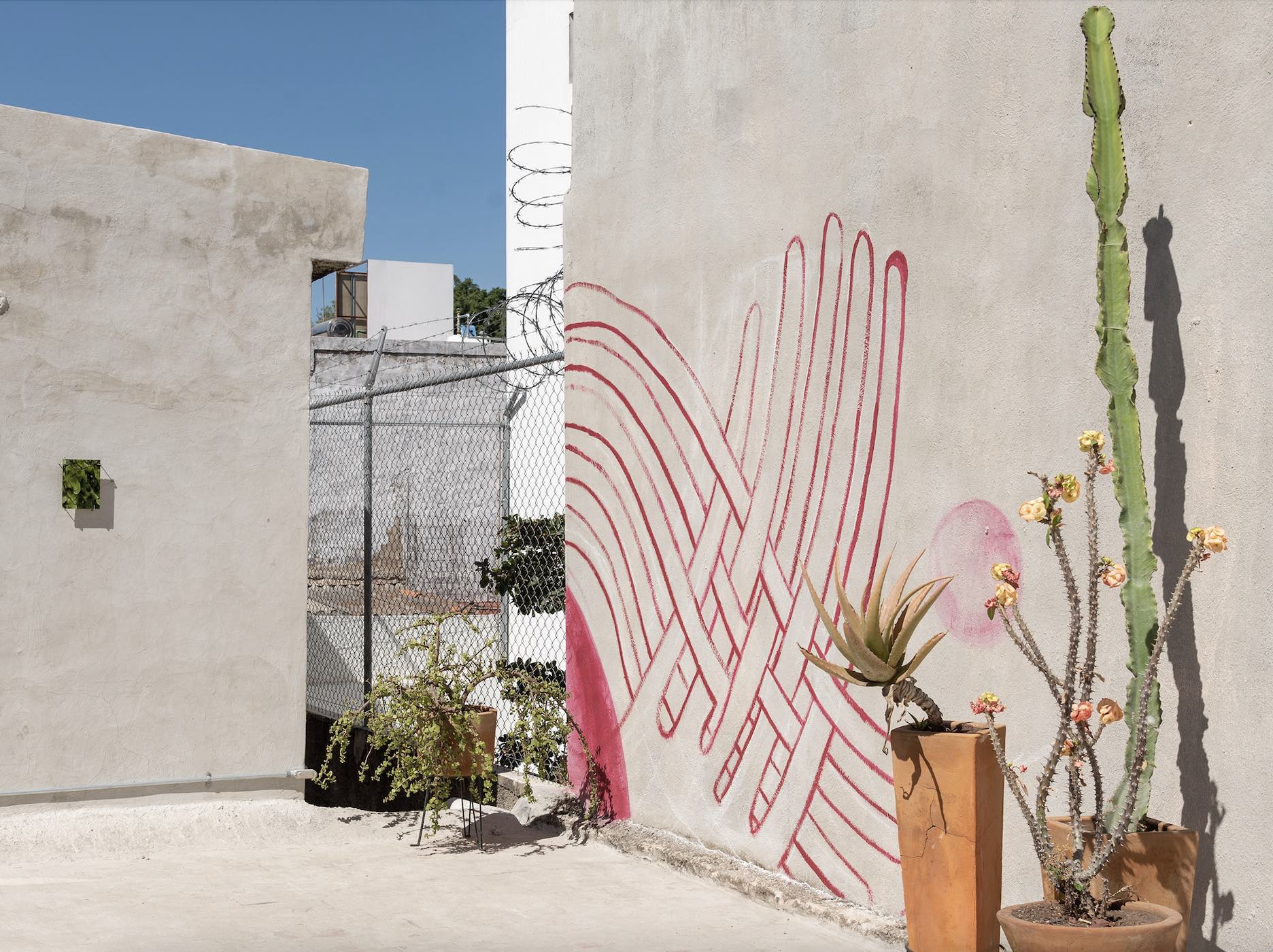
Review
Between Rituals, Effervescence, and Transiting to the Dérive. On "Metamorfosis ancestral"
by Marco Valtierra
At guadalajara90210
Reading time
5 min
The fluidity of bodies, silhouettes in transformation, other corporealities, and movements from remote times are the topics into which is embodied Metamorfosis ancestral, the most recent collective exhibition curated by guadalajara90210 for its site in Colonia Seattle, in Zapopan, Jalisco, and the last exhibition carried out in that location. The exhibition brings together the artistic practice of Celeste, Claudia Cisneros, Edgar Cobian, Emilio Flores, Valentina Guerrero, and Yope Projects.
Upon entering the space, the adobe walls contrast with the floating and wall sculptures by Emilio Flores. His interest in unexpected forms leads him to explore different rhythms, scales, and volumes. Under a fractal logic, we see such structures as mountains, flowers, stars, animals, and anthropomorphic silhouettes. Moving toward the bottom of the ground floor, Flores’s sculptures become utilitarian objects (tables, chairs, armchairs), which he himself calls pure sculptures, and in which one can contemplate the outside world. In this series of works, each piece starts from a general idea that finds, in its fragmented and particular way, a different outlet in its background/form.
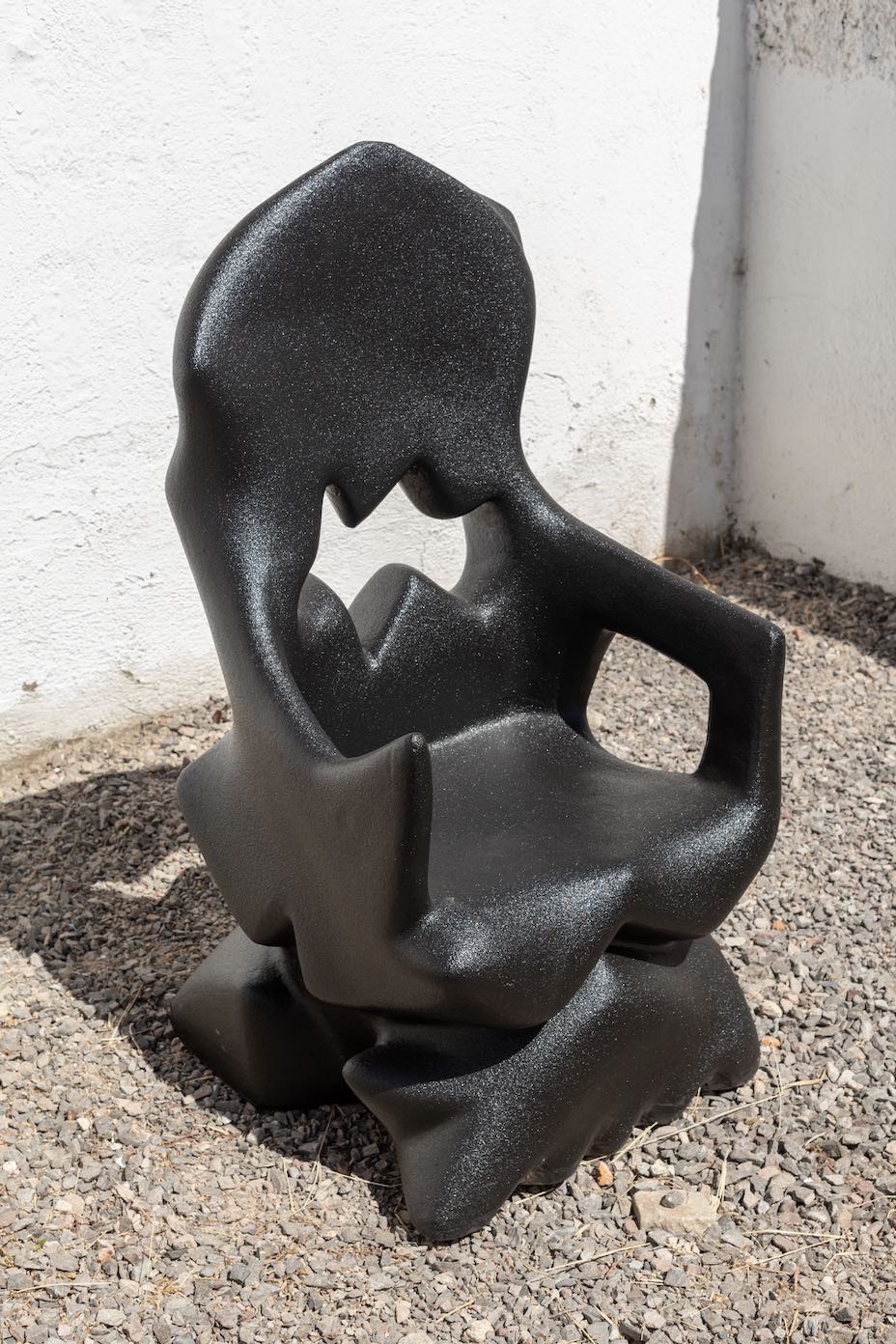
From these pure sculptures one can sit down to contemplate without haste the murals created by María Fernanda Camarena and Gabriel Rosas Alemán of the artistic duo Celeste. The couple made three murals, created especially for this exhibition, in the corral area. These murals function as an alternating sequence of moments and images. The hand, comets, and water wells shape its celestial language. At first, the hand’s fingers are linked; the tips of the fingers ascend and descend, resembling the roots of a plant. In another moment of encounter between the earth and the atmosphere, several celestial bodies (comets, asteroids) cross these extremities and it is difficult to define clearly which is which: comets become fingers and fingers, comets. After that choreography between bodies, the wells have been filled with water. In the rooms on the upper floor, the duo exhibits a series of works that are an extension of the murals in which the hand is an entity that inhabits the imaginary. Their work can also be read as a fragmented landscape of movements: bodies that attract each other in a constant dialogue with vessels within vessels that, among other things, contain the possibility of life. These pieces are centers of gravity where affects come to fall.
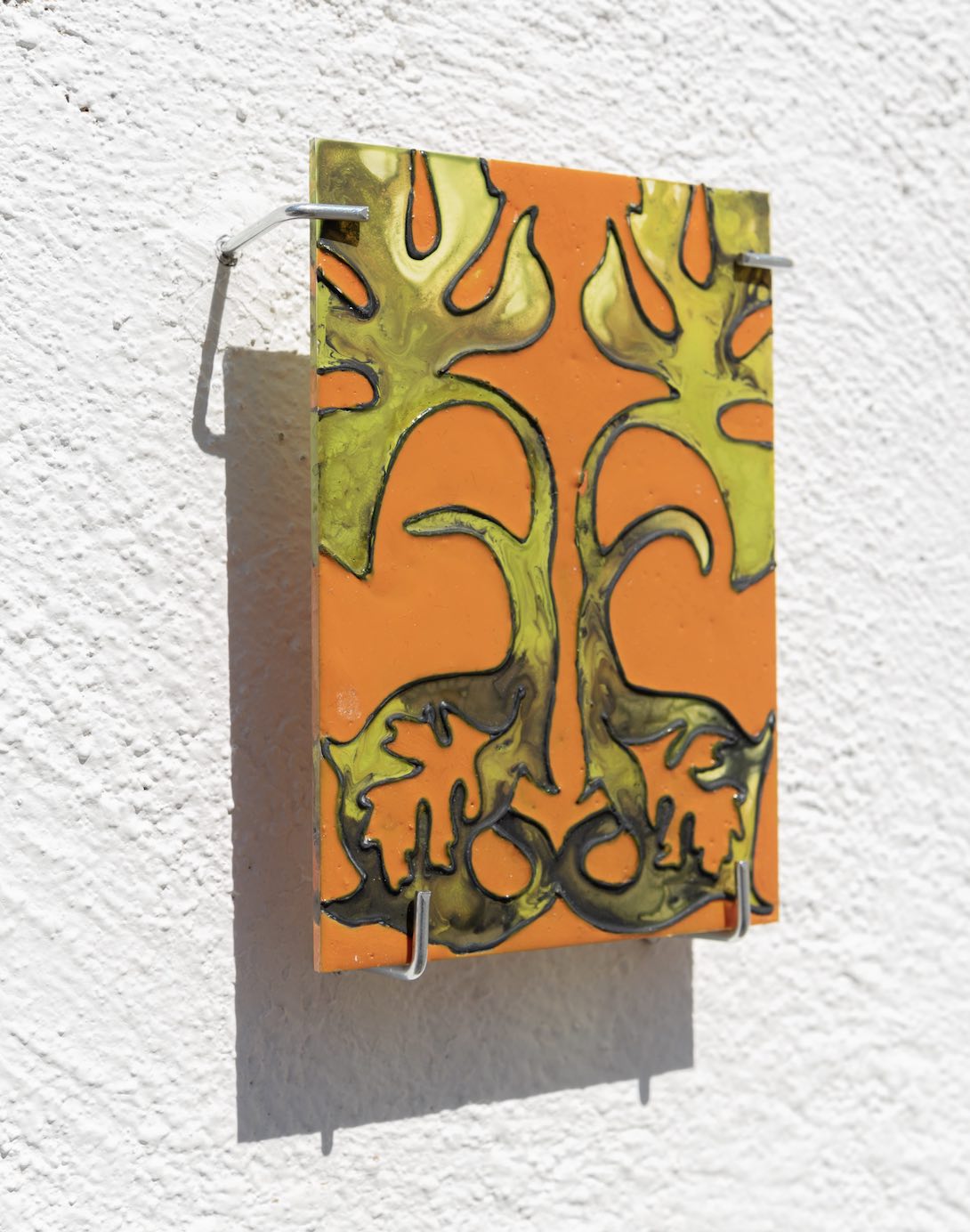
Meanwhile, the works by Valentina Guerrero are distributed at various points both outside and inside the house, perhaps as small findings of nature, like when one trips over a strange and captivating weed. Guerrero exhibits a series of studies for a stained glass window that was originally exhibited as part of her final exhibition for the SOMA Educational Program and that was named A las plantas se les nombra por sus hojas (Plants are Named by Their Leaves). In these studies the artist, originally from Chile, investigates the Urera baccifera, also known as Mala mujer (“Bad Woman”), a plant species famous for its healing function. The visual operates on the symbolic dimension of language, emphasizing in its materiality the condition of naming from a negative connotation, even when the plant has healing functions. Guerrero’s works open up, from something as everyday as a wild plant visible between cracks, imaginaries regarding the social and historical construction of women.
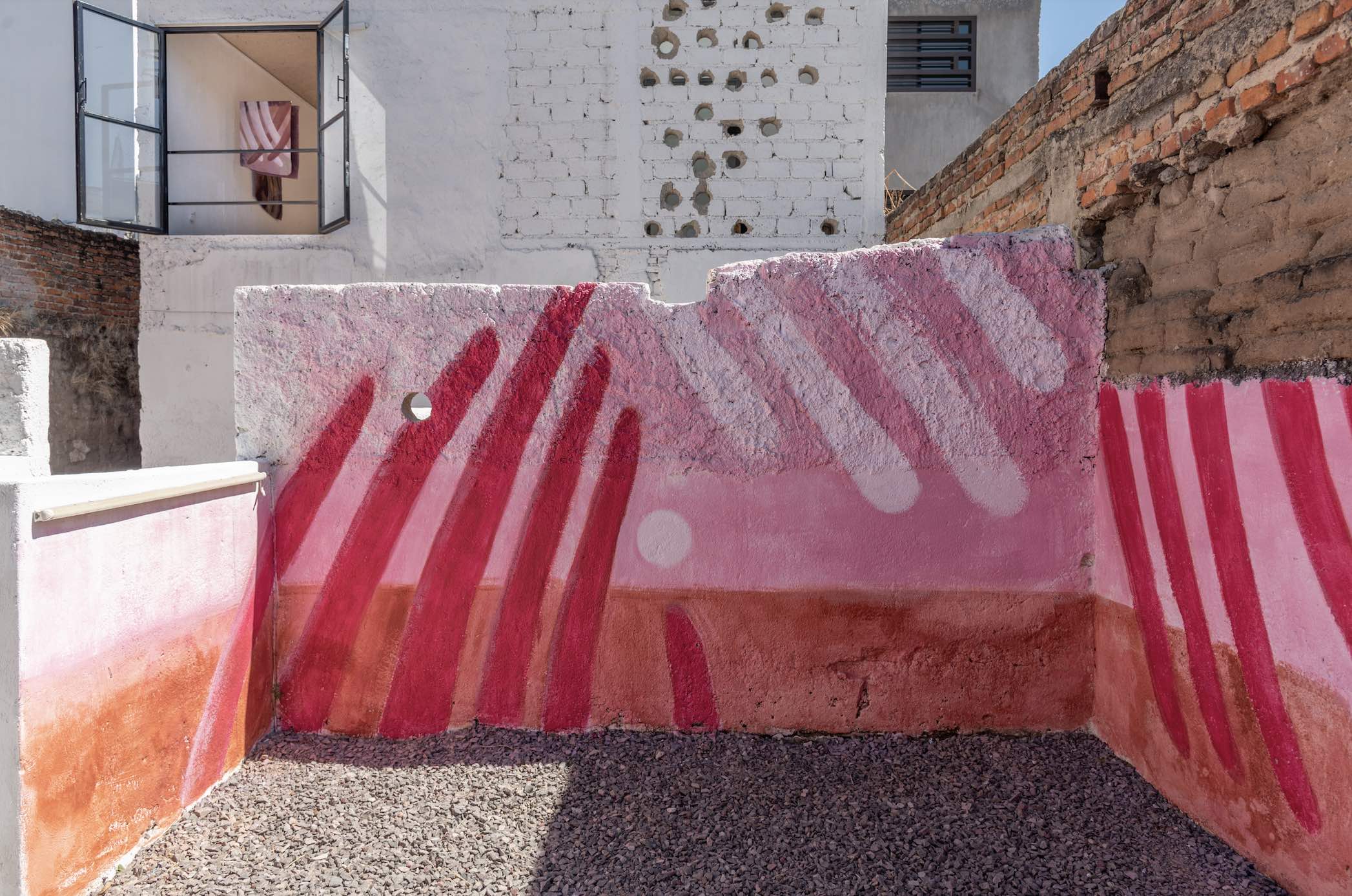
The architectural characteristics of the space, in dialogue with the curating, produce a series of landscapes and settings in which the artistic works, although obviously contemporary, merge as surviving elements over time: material vestiges of an ancestral past.
Going to the upper floor, the relations between corporeality, experience, and representation are accentuated, becoming more explicit in the body of work. The bright, pastel, childlike colors in Edgar Cobian’s oils on canvas counterbalance the narrative of his paintings. In these we see spectra subjected to the fluidity of their own body; we don’t know if they are dancing, having fun, or on their last legs. Their suspended skulls still don’t leave behind their essence; empty eye sockets; physical limbs with the power to be infinite; beings struggling between agony and a renewing energy.
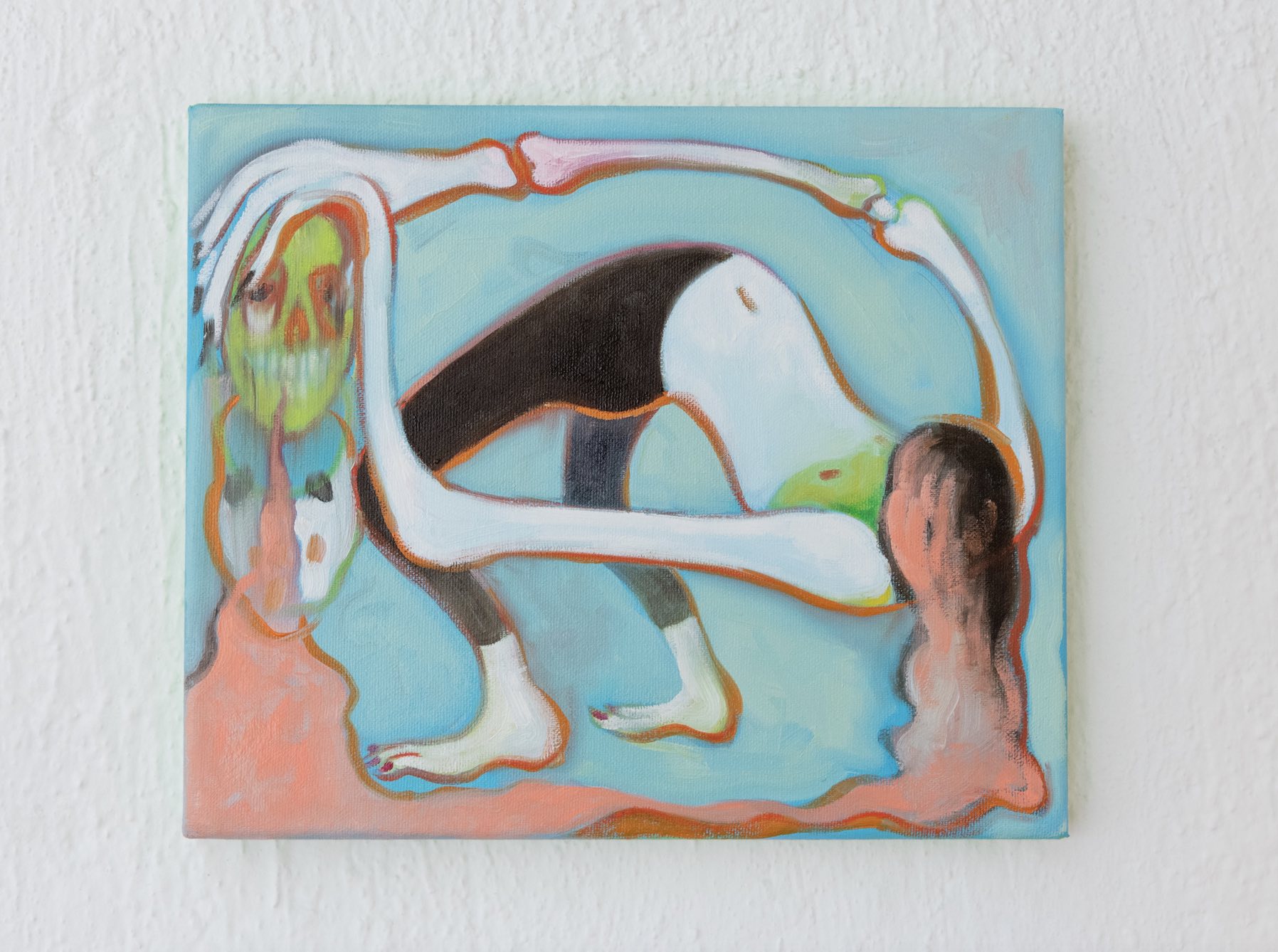
After her own physical healing process, Claudia Cisneros creates a series of object drawings that are conceptualized to be used/rooted in the body or in any space. The artist works with the semantic field of illness and its dérives: health, physiological states, death, recovery, life. Each work employs its own material logic in tension with a discursive unit. For example, in Línea pulmonar (“Pulmonary Line,” 2022) she employs amber arranged over the area of the lungs as an element with healing properties. The pieces try to be cases that heal and protect. The rest of the works stick to the body while it is covered with information from obituaries exhibited in newspapers. Her work emphasizes the body as a material medium through which we establish multiple relations with the world, one that cannot be thought of outside ritual. Her pieces emerge from the tensions of existence, between moments of plentitude and anguish.
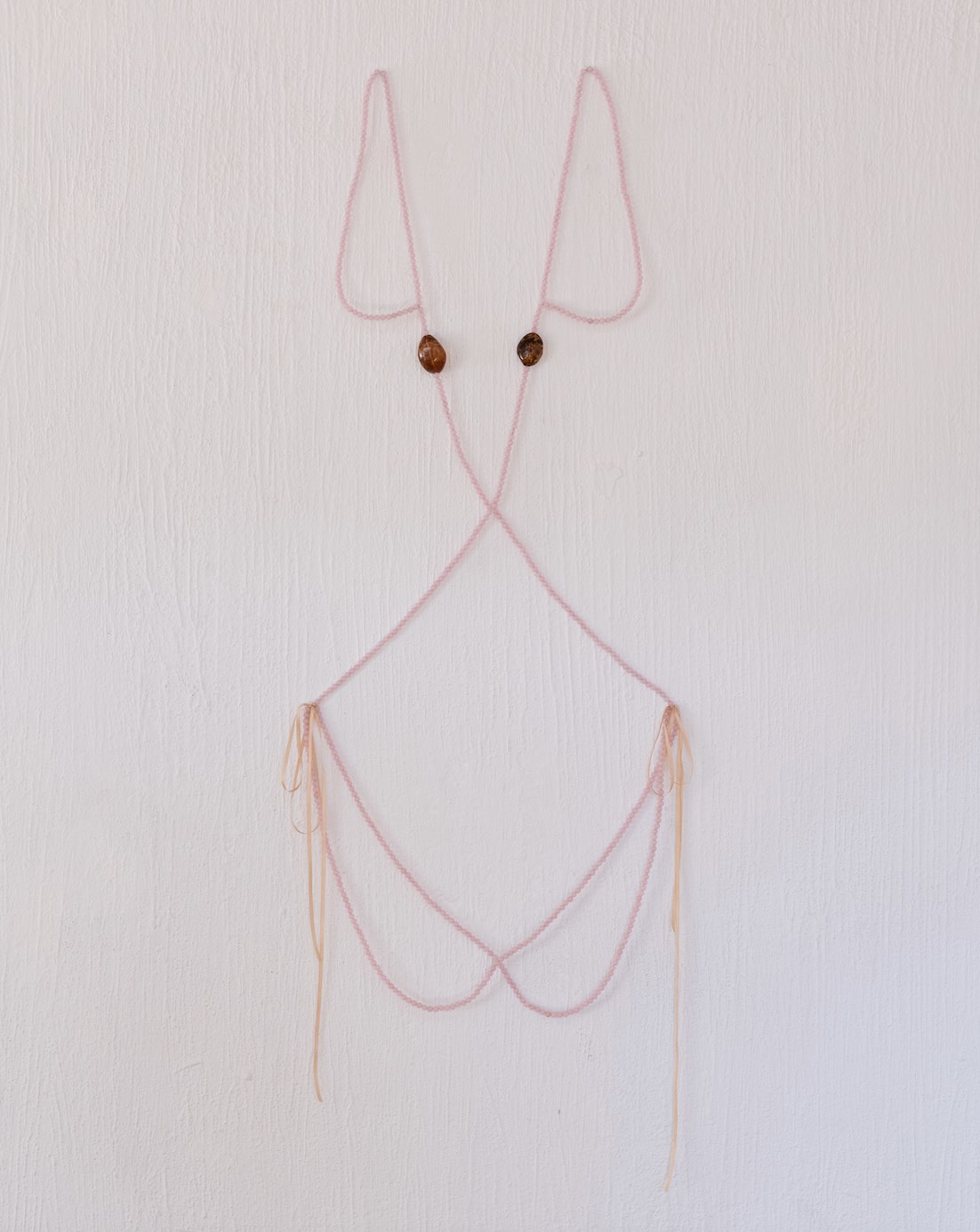
Is this curating a metamorphosis in itself that operates on experience? We went from transiting between aesthetic objects to occupying them and being inside them. From imagining the possibility of wanting them on the body to needing them. Metamorfosis ancestral offers different modes and scenarios that express the condition of migrating from one state to another. Between rituals and effervescence, dérive.
Translated to English by Byron Davies
Published on March 18 2022